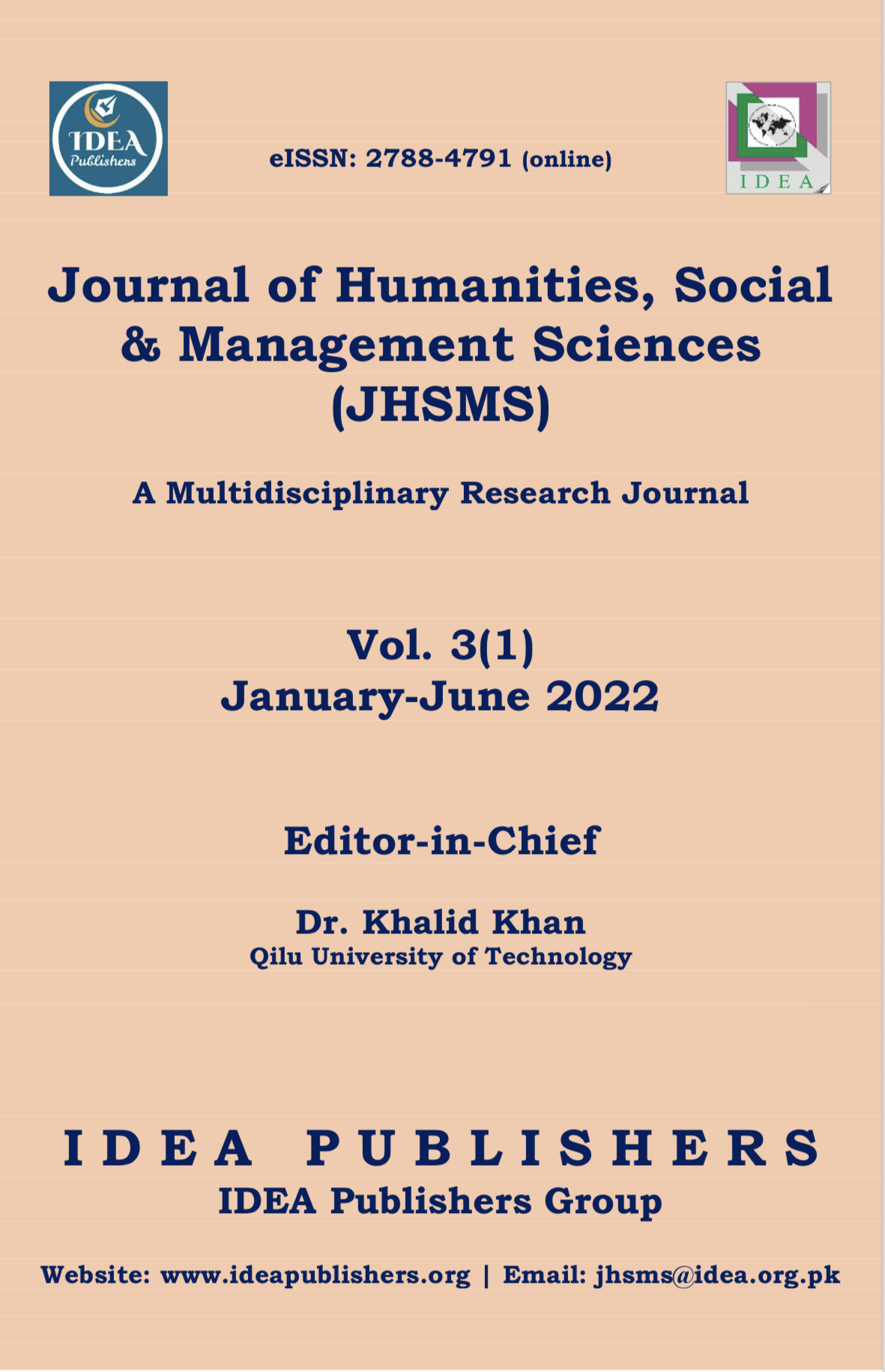A descriptive study of Pahari verb morphology
DOI:
https://doi.org/10.47264/idea.jhsms/3.1.8Keywords:
Pahari, verb, descriptive linguistics, morpho-syntactic, causative, conjunct infinitive, participle, suffixationAbstract
This work is an attempt to present a descriptive analysis of the morphosyntactic properties of Pahari verbs. The study identifies that the verbal forms in Pahari are regular and inflect for tense, mood, aspect, gender, and number. Majority of the verb roots in Pahari are intransitive. Transitive verbs in Pahari are formed from the Intransitive verb root through vowel modification and affixation. Causative verbs in Pahari can be derived through vowel modification and suffixation. Indirect causatives formation is a two-step process. First, the direct causatives are formed from the intransitive verbal root and then the indirect causative verbs are formed from these direct causative verbal roots simply by adding the suffix /a:/. Suffixation is the most common process for the derivation of direct causatives. The infinitive suffix /na/ is added to a verb root to form infinitives in Pahari. Furthermore, Pahari verb morphology indicates the use of three participles: perfective, imperfective and conjunctive. These participles function either as adverbs or adjectives. Pahari Double verbs are formed by combining an inflected verb with a non-inflected verb while conjunct verbs consist of two words: an inflected verb with another word-either a noun or an adjective.
References
Adalat, A. (2014). Pahari language and its implications for Britain. Rajdhani Connections. http://www.rajdhani.org.uk/a/category/essays/
Ahmad, S. (2002). Comparative study of ENGLISH and Pahari language. M. A. Thesis, National University of Modern Languages, Islamabad, Pakistan.
Barjasteh, D. B. (2003). The structure of present and past stems in Balochi compared to old, middle and new Persian. Uppsala University. https://www.semanticscholar.org/
Butt, M. (1995). The structure of complex predicates in Urdu. PhD Thesis, Centre for the Study of Language Publications, Standford University. https://web.stanford.edu
Comrie, B. (1985). Causative verb formation and other verb-deriving morphology. Language Typology and Syntactic Description, 3, 309-348.
Dixon, R. M. W. (1995). Complement clauses and complementation strategies. In F. R. Palmer (Ed.), Grammar and meaning: Essays in honour of Sir John Lyons, (pp. 175–220). Cambridge University.
Dixon, R. M. W., & Aikhenvald A.Y. (Eds). (2000). Changing valency: Case studies in Transitivity. Cambridge University. https://assets.cambridge.org
Dryer, M. S. (2007) Clause Types: language typology and syntactic description. In Timothy Shopen. 1, 224-275. https://www.cambridge.org/core/books/abs/
Grierson, G. A. (1917). The Indo-Aryan Vernaculars. BSOS. https://www.jstor.org/stable/
Kachru, Y. (2006). Hindi (Vol. 12). John Benjamins Publishing. https://benjamins.com ›catalog
Khalique, S. (2012). Clause structure of Pahari in minimalist programme. M.Phil Dissertation (pp.71-80). LAP LAMBERT Academic Publishing.
Khalique, S. (2018). Pahari language of Azad Kashmir: A corpus based grammatical description. PhD Dissertation, University of Azad Jammu and Kashmir Muzaffarabad, Pakistan. http://prr.hec.gov.pk/jspui/bitstream/123456789/12249/1/Shahida_Khalique_English_2018_UAJK_10.04.2019.pdf
Khan, A. Q., & Bukhari, N. H. (2011). Phonological Adaptation of English Loan Words in Pahari. Language in India, 11(1), 61-73.
Khan, A.Q. (2012). Phonology of Pahari: Segmental and Supra Segmental Features. PhD. Dissertation, University of Azad Jammu & Kashmir Muzaffarabad, Pakistan.
Lothers, M. & Lothers, L. (2010). Pahari and Pothwari: A sociolinguistic Survey. Islamabad Summer Institute of Languages. https://www.sil.org/resources/archives/913
Lothers, M. & Lothers, L. (2013). Mirpuri Immigrants in England: A Sociolinguistic Survey. SIL International. https://www.sil.org/resources/archives/48007.
Lyons, J. (1968). Introduction to Theoretical Linguistics. Cambridge: Cambridge University. https://www.google.com/search
Niazi, T. M. (2003). A Phonological Analysis of Pahari Language. PhD. Dissertation, University of Glasgow, UK.
Payne, T. E. (1997). Describing morphosyntax: A guide for field linguistics. Cambridge University. https://www.researchgate.net/publication/25680645
Sarwar, N. (2014). Pahari language in Azad Kashmir exhibiting patterns of language shift. M.Phil Dissertation, University of Azad Jammu & Kashmir Muzaffarabad, Pakistan.
Shakil, M. (2011). The languages of Erstwhile State of Jammu & Kashmir. Academia.edu.
Shakil, M. (Ed.). (2004). Chitka. International Pahari Society (pp. 9-18)
Sharma, J. C. (1982). Gojri grammar. Central Institute of Indian Languages Grammar Series 9. Mysore, India: Central Institute of Indian Languages. archives.org/item/oai:gial.edu
Downloads
Published
How to Cite
Issue
Section
License
Copyright (c) 2022 Shahida Khalique, Nadeem Haider Bukhari, Tahira Jabeen , Ambreen Khawaja

This work is licensed under a Creative Commons Attribution-NonCommercial 4.0 International License.
Please click here for details about the Licensing and Copyright policies of IDEA-PG.















